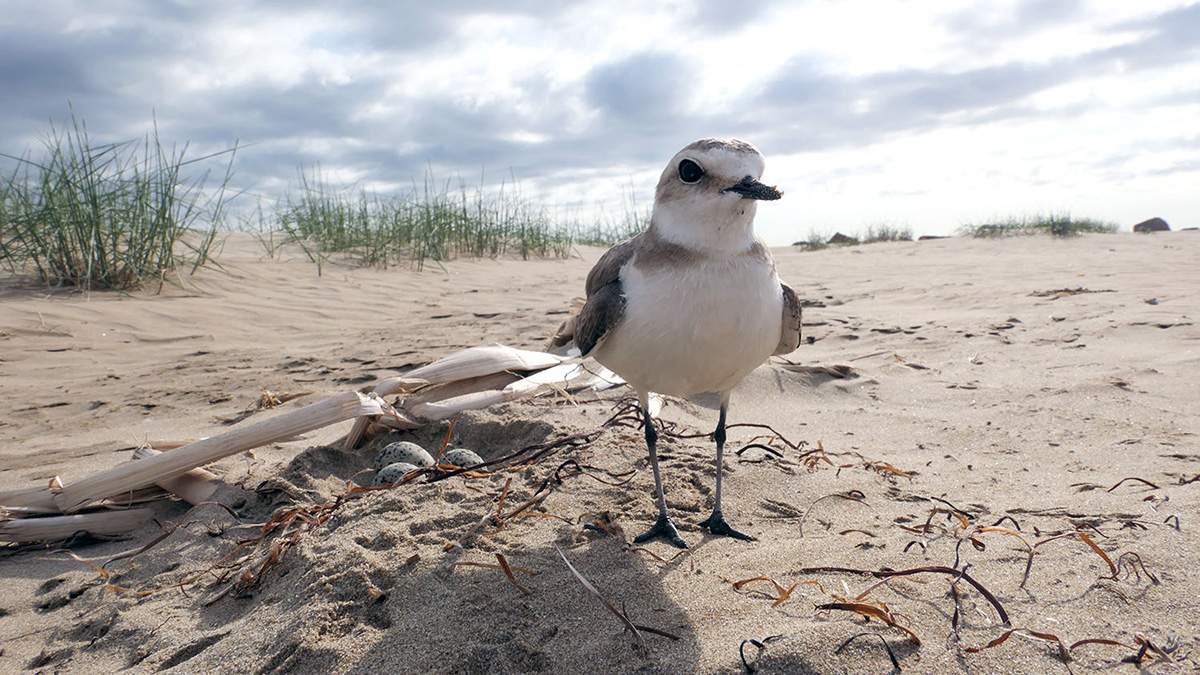An investigation by the Department of Microbiology and Ecology of the University of Valencia published at the Ibis magazine warns about the impact of human activities –mainly dog walking– on one of the threatened bird species that reproduce in these ecosystems, the Kentish plover. The study calls for the adoption of measures that separate both uses and allow the coexistence between the recreational use of beaches and the conservation of birds.
The researcher from the University of Valencia Miguel Ángel Gómez-Serrano has just published an investigation about the consequences of human activities on beaches on the reproduction of one of the threatened birds that reproduce in these ecosystems, the Kentish plover (Charadrius alexandrinus).
This species of wading bird, chosen Bird of the Year by SEO / BirdLife in 2019, is closely linked to coastal dune ecosystems, where it reproduces by installing its nest directly on the sand of the beach. Since their breeding season extends from March to July – sometimes even until August –, a good part of this period must be shared with other beach users: fishermen, bathers, walkers and, increasingly, the dogs that accompany their owners in these playful tasks.
Miguel Ángel Gómez-Serrano carries out a long-term study on the consequences of human activities on the reproductive biology of the Kentish plover on Mediterranean beaches, which are among the most affected by the high human influx. The work published at Ibis, one of the magazines with the greatest impact in the field of research on birds, observes the behaviour of plovers while they incubate their eggs when they are disturbed by the approach of people, dogs and vehicles, distinguishing between the different access roads to these sources of disturbance (beach shore, dunes, roads, promenades, etc.). The studied beaches are located in the provinces of Castellón and Valencia.
The main results of this research show that the response of birds varies depending on the place on the beach where the disturbance occurs and the presence or absence of dogs. The study detects that, when crossing the beach through areas with dunes, people frighten 47% of the birds that are incubating, while they frighten only 13% when they do so on the authorised paths. When it comes to people accompanied by their pets, the behaviour of birds changes drastically, fleeing in most cases – 94% in dunes and 80% on roads. “The dogs resemble the potential predators of these birds – such as the fox, for example – and the birds interpret their erratic movements from the shore to the dunes as if it were a hunting attitude”, comments the author of the article.
The beaches are one of the favourite natural environments for dog walks. However, there is a high degree of ignorance about the impact that this activity can have on the natural environment both at the management and user level. This fact is favouring the proliferation of coastal stretches enabled for bathing and walking pets. “The problem is not that the dogs access the beaches or not, but when and where they do it. Most municipalities consider that this is a demand that is incompatible with the most touristy beaches, which is why they tend to station these sectors for pets in the more natural dune ecosystems, where conflict with birds is guaranteed”, comments Gómez. “The trend is, furthermore, to authorise this activity sooner and earlier, even in the middle of spring, thus coinciding with the breeding season for birds”, he adds.
The study calls for the need to regulate the entry of dogs on the beaches. “It has been detected that birds can become accustomed to human presence, a circumstance that makes possible the coexistence between the recreational use of beaches and the conservation of birds, but it is necessary to guarantee an effective separation of uses, that is, the leisure and the conservation of the dune ecosystem.”
Reference
Four‐legged foes: dogs disturb nesting plovers more than people do on tourist beaches. Gómez‐Serrano, M.Á. (2020). Ibis. doi:10.1111/ibi.12879.


